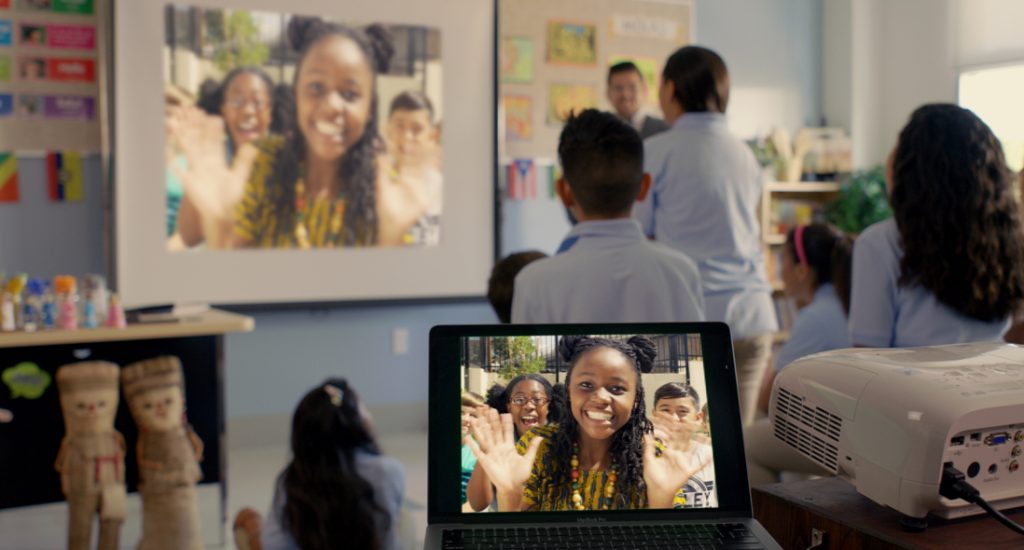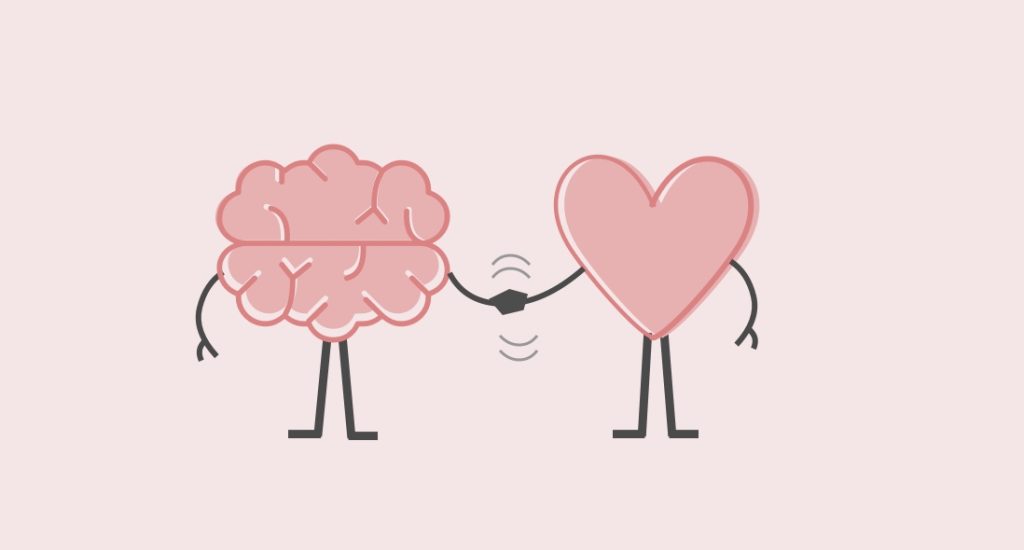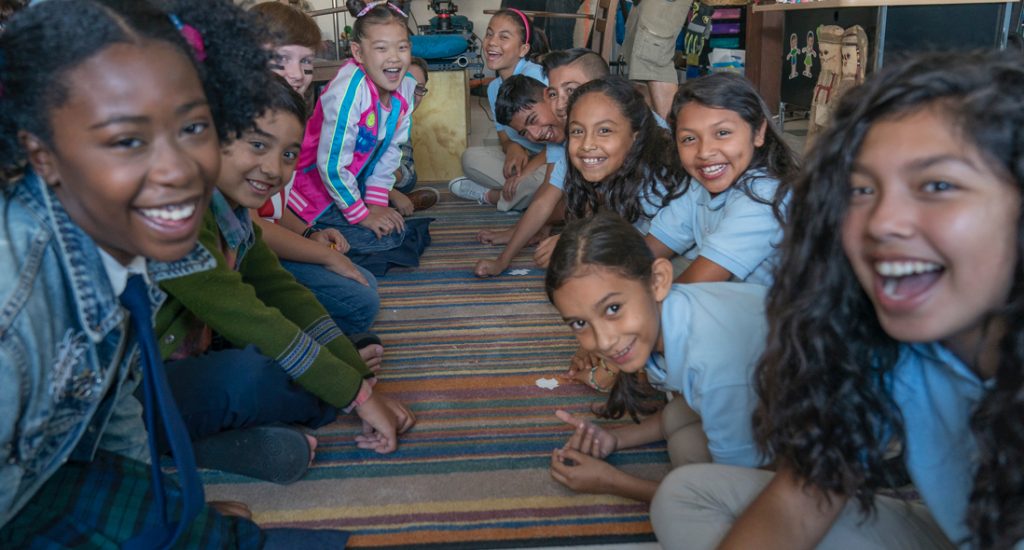As our name suggests, empathy is at the heart of our work here at Empatico. Did you know that “empático” means empathic in Spanish?
Our mission is to give millions of educators and students the opportunity to tell their stories, explore their similarities and differences, and practice empathy with peers from around the world through meaningful, virtual connections. Ultimately, our goal is to foster a more empathetic future generation with a greater understanding of the world and the people within it. However, while many of our discussions focus on what empathy is, it is equally important to recognize what empathy is not– especially for those of us who are helping students flex their empathy muscles in the classroom and during Empatico exchanges. And that’s exactly what we hope to define here.
Defining Empathy
As we discussed in this previous post, the challenge in defining (and practicing!) empathy is that it is not just one single skill. Throughout the years, psychologists and neuroscientists have come to understand that empathy has various aspects (1). It entails:
- Feeling what another person is feeling, which is called emotional or affective empathy.
- Thinking about another person’s situation, which is called cognitive empathy.
- Taking action to help others based on your understanding of another person’s feelings and perspective, which is called behavioral empathy.
A line from Helen Riess’ book “The Empathy Effect” (1) sums up the interplay of these dimensions quite well: “Empathy is produced not only by how we perceive information, but also by how we understand that information [cognitive empathy], are moved by it [emotional empathy], and use it to motivate our behavior [behavioral empathy].”
What is perhaps most important to understand is that, at its core, empathy means feeling with the person and understanding their situation. It requires that we open our minds and become vulnerable enough to relate to others at deeper levels. It also entails acknowledging the other person’s humanity, that they are equally important as we are, and that their feelings are equally valid. When we do this, we can truly feel with another person and empathize with them. This process is what ultimately strengthens the connection between two individuals.
The Challenges of Empathy
Feeling empathy can be very emotionally and cognitively demanding– it takes a lot of mental work and the feelings we share are not always pleasant. It is therefore no surprise that we can’t be empathetic all the time. When our ultimate goal is to build relationships and gain a deeper understanding of others, it is important that we recognize when we have limited capacity to empathize (e.g., when we are stressed, tired, overwhelmed, etc.). In these cases, we might instead feel other types of emotions, like pity, which can actually lead to disconnection between humans. While pity is not necessarily a negative emotion, feelings of pity may cause us to view other people as inferior, helpless, or less important than ourselves and inadvertently create a difference in perceived social status (2) between ourselves and others. This, in turn, may cause us to unintentionally regard another person’s emotions or perspective as less valid than our own. This video from Brené Brown provides a great explanation of what empathy is not!
Although we cannot be empathetic 100% of the time, we can take steps to ensure we are able to empathize when we want and need to. Cognitive empathy in particular (i.e., perspective taking) is a mental task that we can train our brains to perform better and more frequently. For instance, if we know that we tend to feel pity for certain people or certain groups of people often, we can make an effort to practice perspective taking in those situations. Moreover, in cases where we don’t have enough knowledge to put ourselves in the other person’s shoes or when we are unsure of our own interpretations, we can practice curiosity and model it for our students. Modeling curiosity by having conversations and asking questions can provide valuable insights as to why a person might feel the way the do in a given situation.
Let’s Consider an Example:
Suppose one of your new students this year, Mara, is an English language learner. One day during recess, one of your other students, Isabella, walks up to you and says, “Why doesn’t Mara ever want to play with anyone? I feel so bad for her.” While Isabella’s remark is well-intentioned, her feelings of pity for her classmate do not motivate her to connect with or help Mara. Actually, pity may inadvertently create an emotional distance between Isabella and Mara, and perhaps even lead Isabella to misperceive Mara’s situation and behavior altogether. For instance, she might think Mara prefers to be alone.
You recognize that this is an important learning opportunity for Isabella. You first encourage her to put herself in Mara’s shoes by explaining: “Mara just moved here from Perú with her family. How would you feel coming to a new country and a new school without knowing the language very well? How do you think she might feel?” As Isabella thinks about this situation, she realizes that she would feel very nervous upon moving to a new country, and that Mara probably feels nervous too [cognitive empathy or perspective taking]. In fact, Isabella recalls a time when she went to visit family in Italy and she felt very nervous meeting her cousins’ friends because she didn’t speak Italian well.
After discussing this situation with Isabella, you then encourage her to go learn more about Mara’s perspective by talking to her directly.
As Mara and Isabella begin to talk, they immediately realize how much they actually have in common: they both like to read and they both enjoy playing volleyball! Moreover, Isabella learns that Mara doesn’t actually like playing alone during recess; she was just nervous to speak to the other students given that she is just learning English and doesn’t know anyone. When Mara describes her feelings, Isabella feels her sadness and discomfort [emotional empathy]. However, with her deeper understanding of Mara’s situation, Isabella is able to help her new friend feel more comfortable with the other students: She invites her to play volleyball with several other girls in the grade and even helps her practice her English by discussing books together!
Teaching Empathy
As this example illustrates, empathy strengthens our connection with others and allows us to find a shared humanity with individuals who might have an entirely different lived experience than our own. While pity may lead us to misperceive others’ situations, empathy allows us to truly understand others’ needs much more deeply.
Given our aim to spark empathy in students, it is important that we also are able to identify when our students showcase emotions like pity. Building on those feelings and guiding students toward empathy can make a world of a difference in the types of relationships they cultivate.
So, the question is: what can we do as educators to ensure our students are truly embracing empathy?
Check out our second post in this series, which dives deeper into what empathy may look like in action!
(1) Riess, H. (2018). Empathy Effect: Seven Neuroscience-Based Keys for Transforming the Way We Live, Love, Work, and Connect Across Differences. Sounds True, Incorporated.
(2) Social status refers to a person’s standing or importance in relation to other people within a society.




